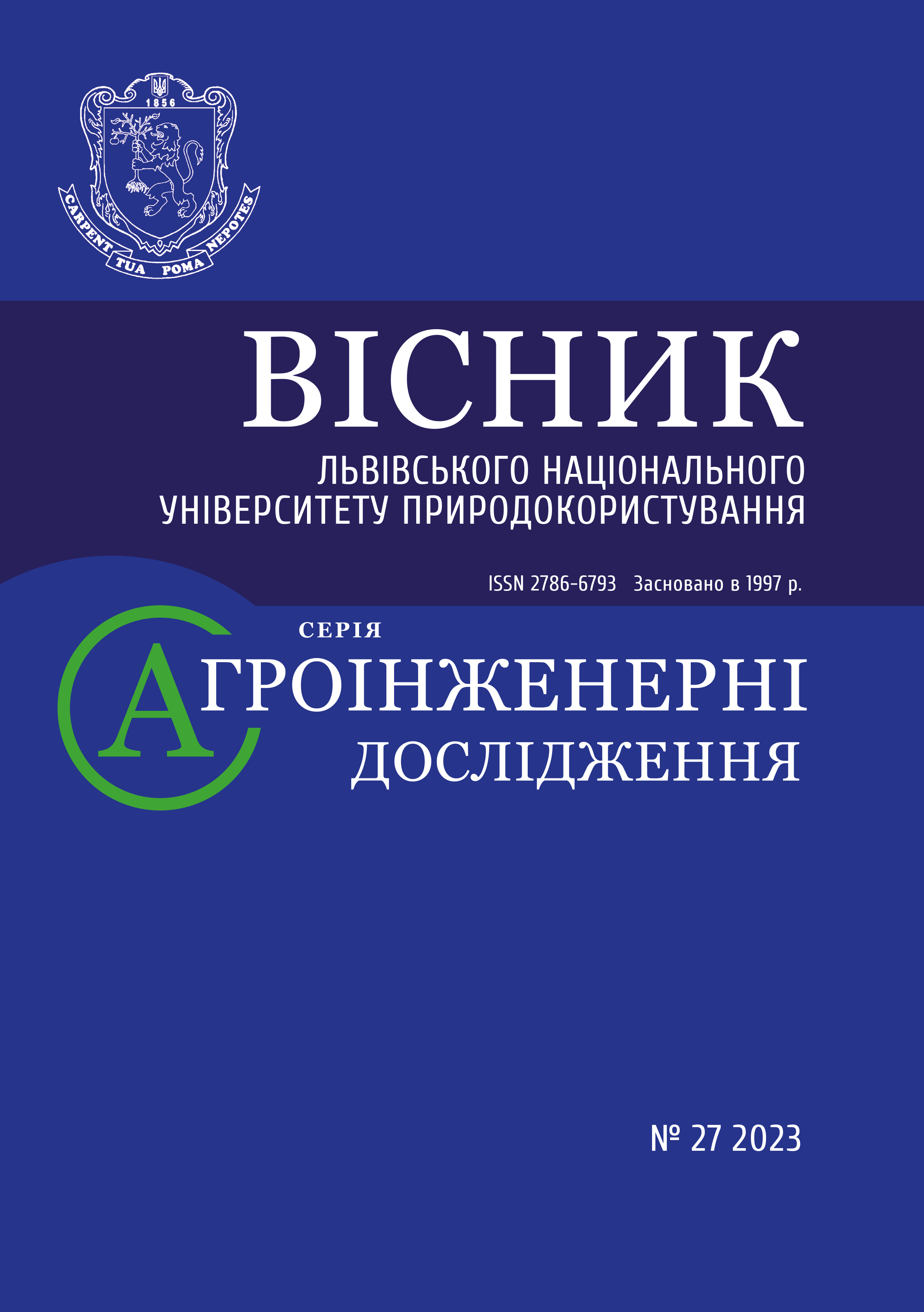Elastic bending of a strip under the action of applied forces
DOI:
https://doi.org/10.31734/agroengineering2023.27.070Keywords:
elastic axis, arc length, distributed force, curvature, moment, differential equationsAbstract
Elastic bending of a rod involves restoring its elastic axis to its initial rectilinear state after the deformation forces have stopped. Rectilinear structures are widely used in construction for various types of bridges and overlaps. These structures must not deflect significantly, as it can lead to their destruction. Therefore, finding the permissible limits of deflection of these building elements is an urgent task. The permissible deflection of such rectilinear elements is extremely small, i.e. disproportionate to the length of the element, therefore simplified theoretical formulas, which satisfy the practice, are used to calculate its value. The simplification means that the second-order differential equations of the elastic axis are replaced by the first-order differential equations, which gives sufficiently acceptable results of the deflection of the rectilinear element with minor deformations. In the engineering practice, there are rectilinear rods that undergo significant deformations. The simplified formulas cannot be used to calculate their deflections. In addition, curvilinear elastic elements, which already have the initial curvilinear shape of the elastic axis, have become widespread. These are risers of cultivator paws that smooth out pulsating dynamic loads, springs, piston rings, etc. It is the calculation of the shape of the elastic axis of the piston ring that is most considered in the article.
Finding the shape of the elastic axis of a cantilever clamped rod is based on the position of the theory of resistance of materials, according to which the curvature of the elastic axis is directly proportional to the applied moment and inversely proportional to its stiffness. At the same time, two types of load are considered, namely a concentrated force at the free end or a uniformly distributed force along the rod. The effect of these forces on both a rectilinear rod and a rod with a given constant curvature, that is, a rod outlined along the arc of a circle, is considered. Examples are given for all cases and their elastic axes after deformation.
References
Chen T., Wang L., Xu J., Gao T., Qin X., Yang X. … Liu C. (2022). Effect of groove texture on deformation and sealing performance of engine piston ring. Machines, 10(11), 1020.
Ershov, A. A., & Suleimanov, B. I. (2017). Some features of bending of a rod under a strong longitudinal compression. Russ. J. Math. Phys., 24, 216–233.
Forero J. D., Ochoa G. V., & Rojas J. P. (2020). Effect of the geometric profile of top ring on the tribological characteristics of a low-displacement diesel engine. Lubricants, 8(8), 83.
García-Vilana, S., Sánchez-Molina, D., Llumà, J. et al. (2022). A new technique for curved rod bending tests based on digital image correlation. Exp Mech, 62, 573–583.
Gebhardt, C. G., & Romero, I. (2021). On a nonlinear rod exhibiting only axial and bending deformations: mathematical modeling and numerical implementation. Acta Mech, 232, 3825–3847.
Han, X., Chen, X., Li, K. et al. (2021). Bending rod is unnecessary in single-level posterior internal fixation and fusion in treatment of lumbar degenerative diseases. BMC Surg, 21, 394.
Kharchenko, V. Ie., & Korsak, V. I. (2015). Analitychne rozviazannia neliniinoi zadachi zghynu pruzhnoho stryzhnia. Vydavnytstvo Lvivskoi politekhniky, 820, 105–115.
Kresan, T., Pylypaka, S., Khropost, V., & Babka, V. (2022). Elastic bending of a strip with a significant deflection under the action of applied forces and moment. Applied Geometry and Engineering Graphics, 137–147.
Rodrıguez A. L., Vølund A., & Klit P. (2021). Modeling of piston ring wear. Proc IMechE Part J: Engineering Tribology, 235(3), 629–638.
Vetyukov, Y., & Schmidrathner, C. (2019). A rod model for large bending and torsion of an elastic strip with a geometrical imperfection. Acta Mech, 230, 4061–4075.
Wang, Z., Wang, W., & Zhang, Q. (2022). New effective bending rigidity and structural instability analysis of noncircular cross-section elastic rod model. Eur. Phys. J. Spec. Top., 231, 2325–2334.


